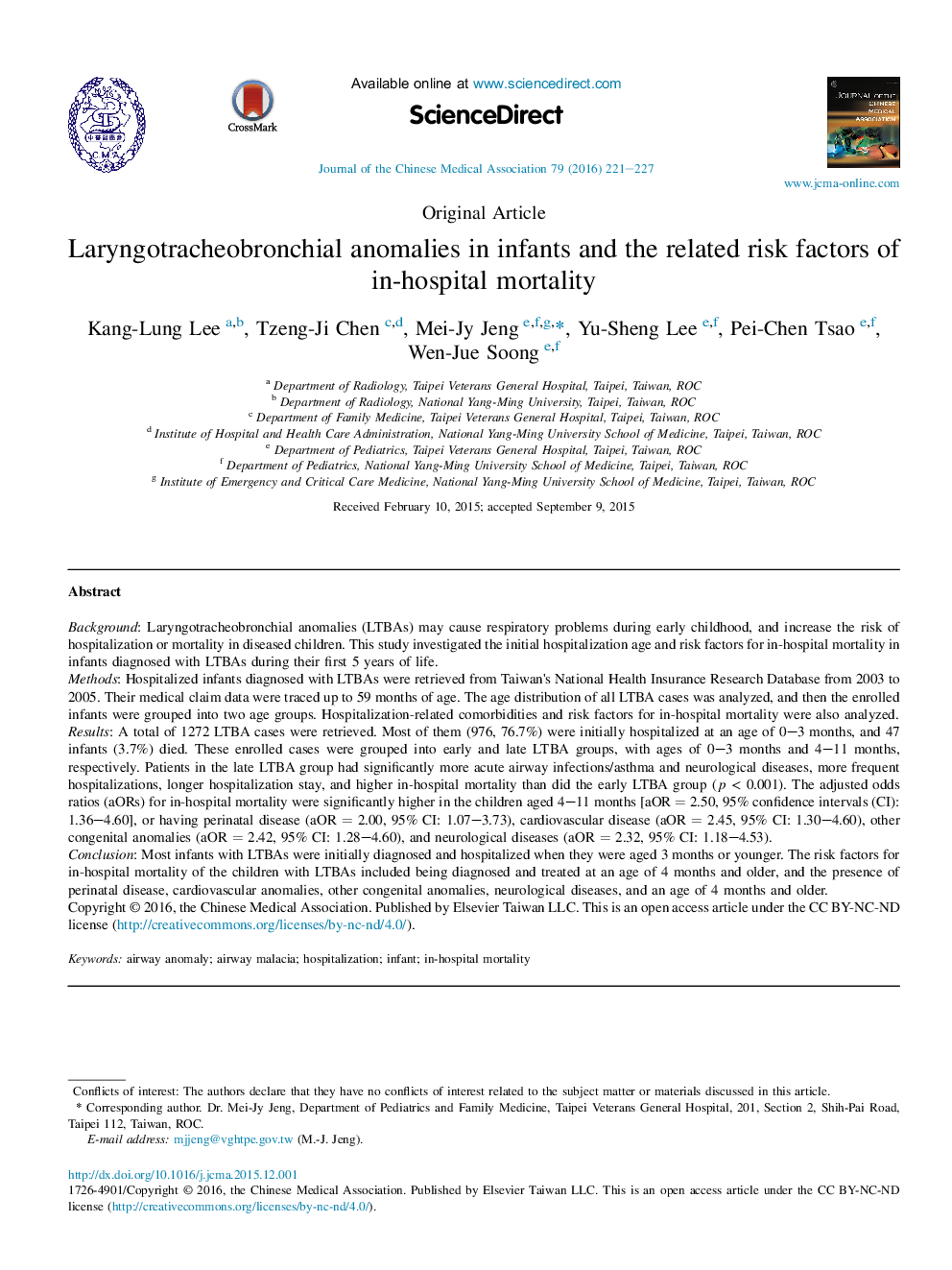| کد مقاله | کد نشریه | سال انتشار | مقاله انگلیسی | نسخه تمام متن |
|---|---|---|---|---|
| 3475805 | 1233223 | 2016 | 7 صفحه PDF | دانلود رایگان |
BackgroundLaryngotracheobronchial anomalies (LTBAs) may cause respiratory problems during early childhood, and increase the risk of hospitalization or mortality in diseased children. This study investigated the initial hospitalization age and risk factors for in-hospital mortality in infants diagnosed with LTBAs during their first 5 years of life.MethodsHospitalized infants diagnosed with LTBAs were retrieved from Taiwan's National Health Insurance Research Database from 2003 to 2005. Their medical claim data were traced up to 59 months of age. The age distribution of all LTBA cases was analyzed, and then the enrolled infants were grouped into two age groups. Hospitalization-related comorbidities and risk factors for in-hospital mortality were also analyzed.ResultsA total of 1272 LTBA cases were retrieved. Most of them (976, 76.7%) were initially hospitalized at an age of 0–3 months, and 47 infants (3.7%) died. These enrolled cases were grouped into early and late LTBA groups, with ages of 0–3 months and 4–11 months, respectively. Patients in the late LTBA group had significantly more acute airway infections/asthma and neurological diseases, more frequent hospitalizations, longer hospitalization stay, and higher in-hospital mortality than did the early LTBA group (p < 0.001). The adjusted odds ratios (aORs) for in-hospital mortality were significantly higher in the children aged 4–11 months [aOR = 2.50, 95% confidence intervals (CI): 1.36–4.60], or having perinatal disease (aOR = 2.00, 95% CI: 1.07–3.73), cardiovascular disease (aOR = 2.45, 95% CI: 1.30–4.60), other congenital anomalies (aOR = 2.42, 95% CI: 1.28–4.60), and neurological diseases (aOR = 2.32, 95% CI: 1.18–4.53).ConclusionMost infants with LTBAs were initially diagnosed and hospitalized when they were aged 3 months or younger. The risk factors for in-hospital mortality of the children with LTBAs included being diagnosed and treated at an age of 4 months and older, and the presence of perinatal disease, cardiovascular anomalies, other congenital anomalies, neurological diseases, and an age of 4 months and older.
Journal: Journal of the Chinese Medical Association - Volume 79, Issue 4, April 2016, Pages 221–227
